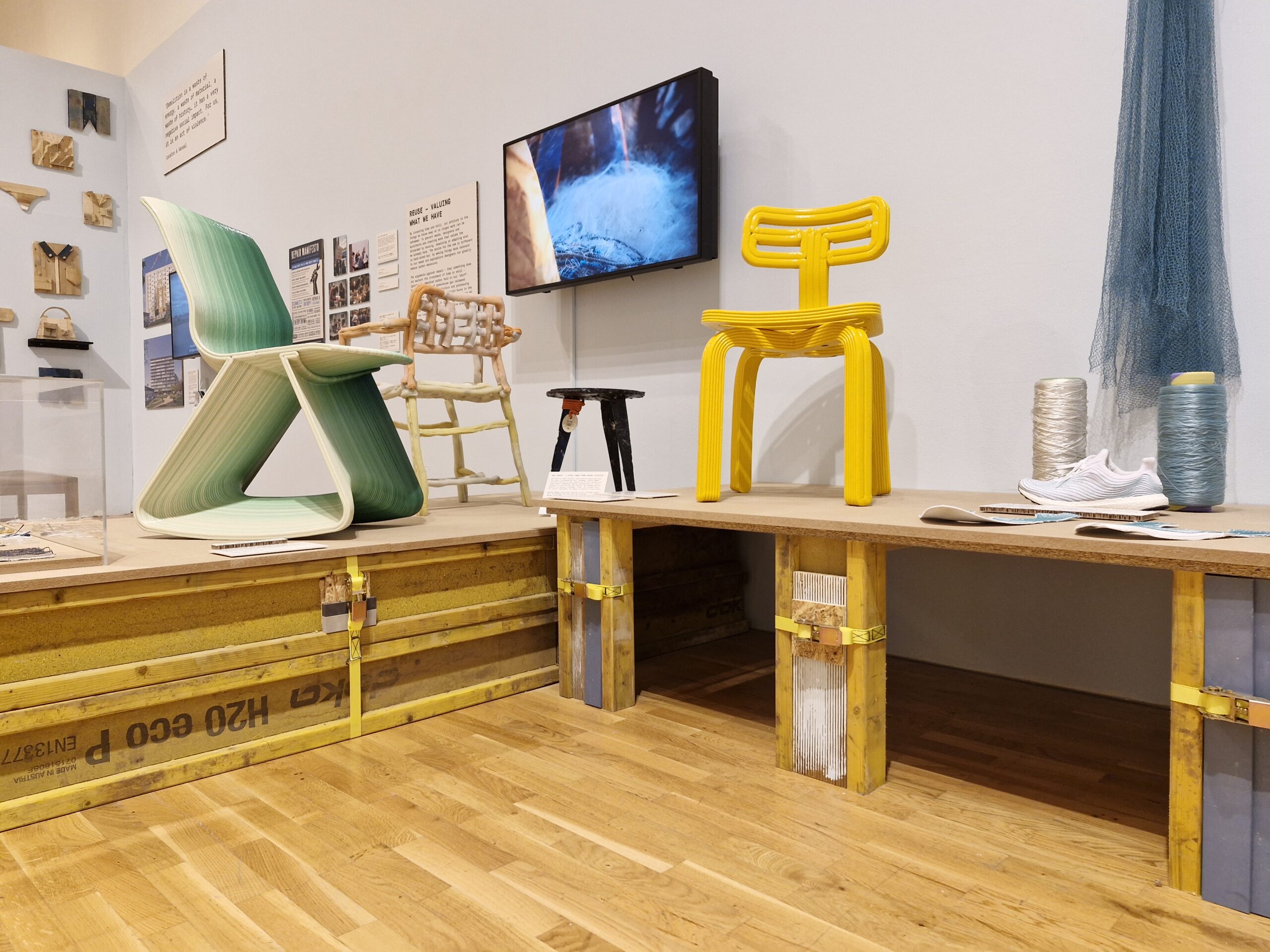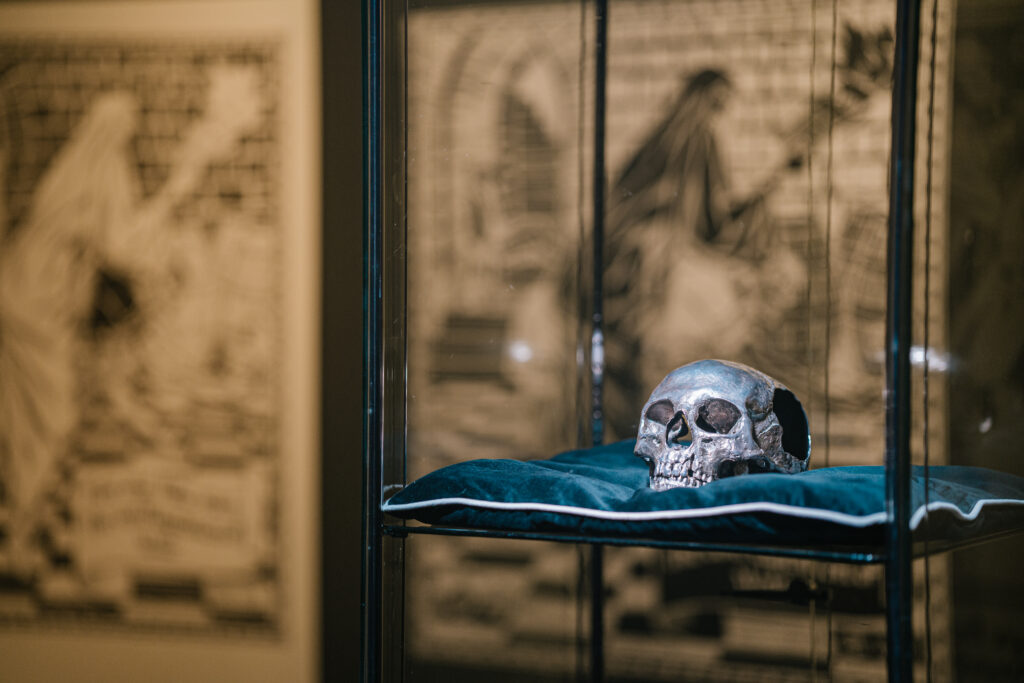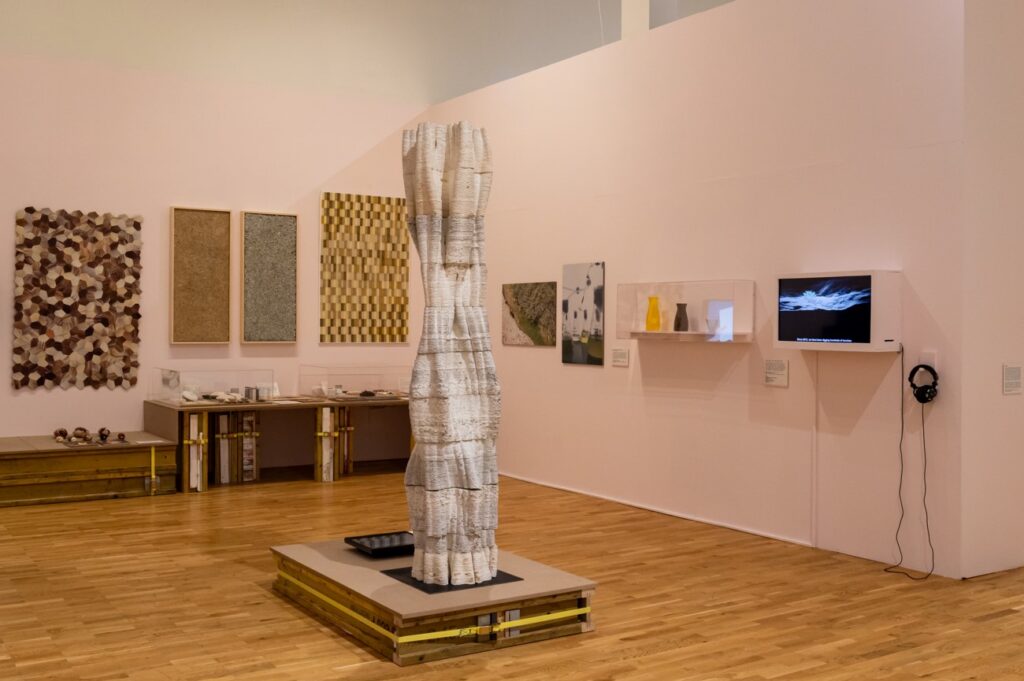
We are living in an age of waste. The world produces two billion tonnes of rubbish each year, and only 15% of that is recycled. A t-shirt is worn on average just 7 times during its life. We are consuming and throwing away more, while recycling less. But how do we solve this urgent, global problem? A new exhibition at Midlands Arts Centre is showcasing some creative and colourful solutions in ‘Waste Age: What can design do?’
On tour from London’s Design Museum, and following stints in Paris and Hong Kong, this major, multimedia exhibition has been staged across two floors in its Birmingham location. Focusing on work by a new generation of designers, it invites viewers to rethink our relationships to everyday things – from fashion to food, electronics to construction, and even packaging.
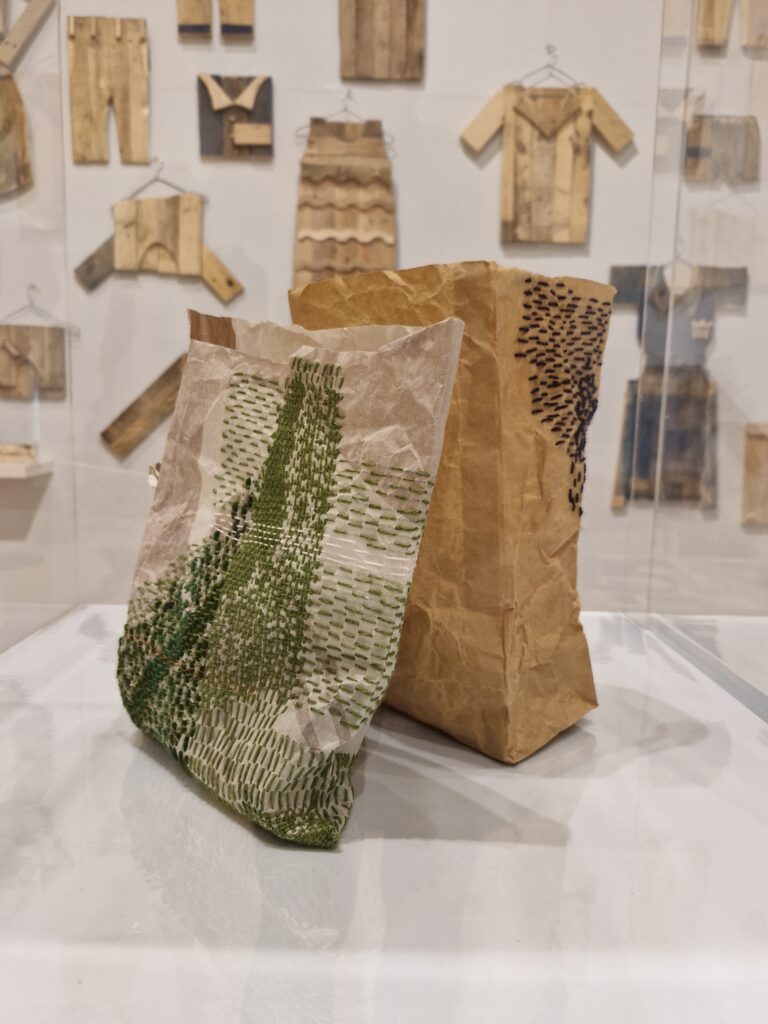
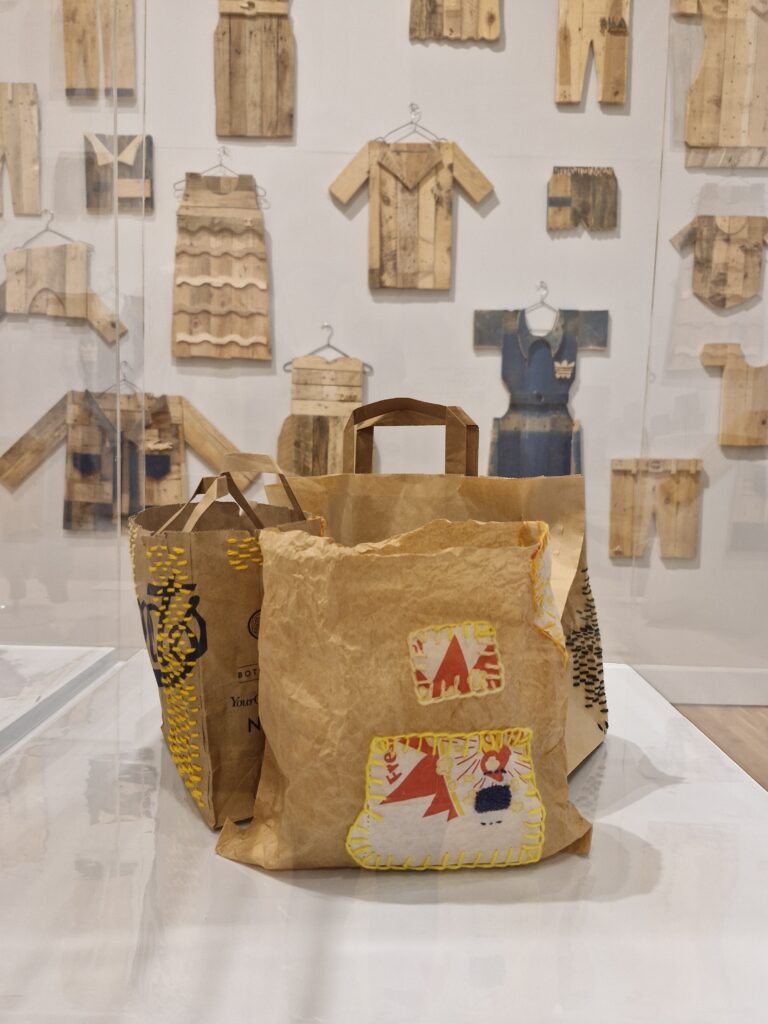
Repair is a key theme, visible in the ‘Mended Bags’ of Celia Pym. She has darned with care a collection of used, brown paper bags, threading new life into these everyday items with bright stitches of wool and cotton. Crafting eye-catching patterns, she doesn’t simply conceal the torn paper but draws attention to the rips, proving that reuse is possible and something to be proud of.
The exhibition also celebrates the use of sustainable materials to make functional objects for the home. 3D-printed, neon-coloured chairs have been made out of old fridges, while high-end decorative veneers have been crafted from corn husks. A strikingly surreal, hairy-looking table has been constructed from sisal, made from agave leaves. There is a playful quality to many of these designs which show that recycled art doesn’t have to be drab; in the hands of the right designer, it can be a visual, as well as tactile, delight.
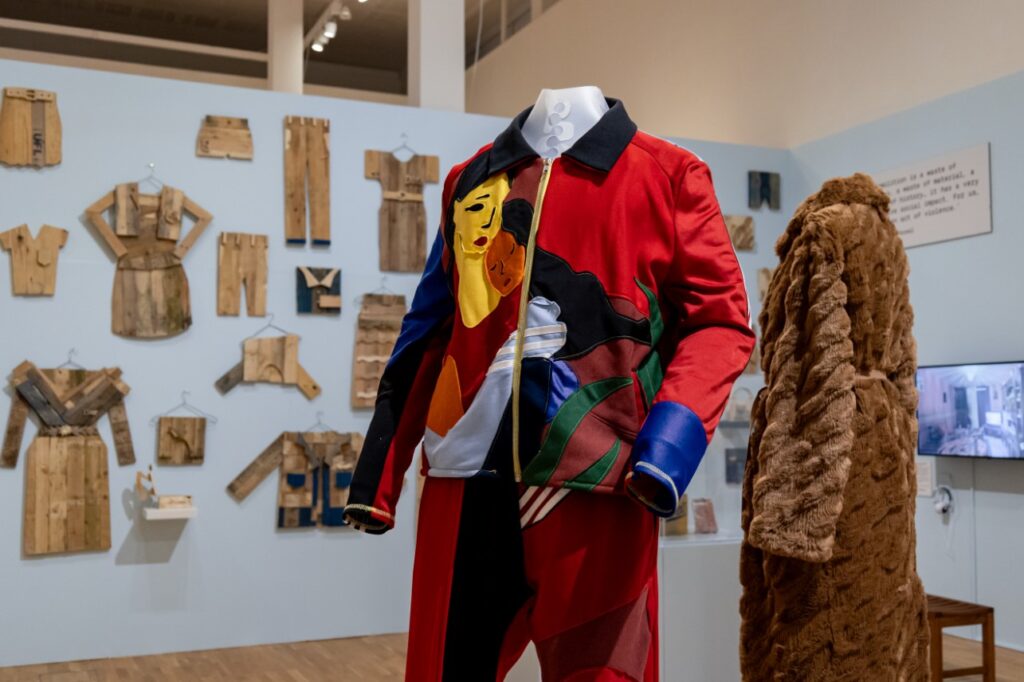
Similarly, a number of fashion designers included in the show prove that being eco-responsible doesn’t need to come at the cost of style. On display is a collection by Stella McCartney, who has long championed ways to reduce the environmental impact of her designs. A sleek and shiny suit has been made from ocean and factory waste that has been transformed into ECONYL®, while an extravagant-looking fur-free fur coat has been fashioned from soft, plant-based fibres.
Behind McCartney’s collection is a wall of wooden clothing sculptures, onto the surface of which are carved flashy brand labels: Adidas, Dior, Calvin Klein. Commissioned by MAC, Birmingham-based artist Abdulrazaq Awofeso took inspiration from the clothes waste markets in his native Nigeria to made ‘Okrika’. The installation explores the impact of fast fashion, with a focus on the discarded garments which make their way from Europe and the US to communities in Africa who often upcycle them under exploitative conditions. With sound recordings from Nigerian markets booming out, he challenges romanticised views of the circular economy.
Closer to home, a series of photographs frames Balsall Heath’s Repair Café where diverse volunteers help to repair household items and thus reduce landfill waste. The exhibition points to our separation from the materials we rely on, and the power of communities – by sharing expertise, we can ensure the longer life of objects.
The Repair Café will be collaborating with MAC to host free, pop-up repair events on site, as well as a clothes swap on Thursday 14 November. Creative workshops, including Waste Paper Making on Saturday 30 November, will also allow participants to experiment with repurposing paper waste, incorporating foraged and personal items to create one-off paper creations.
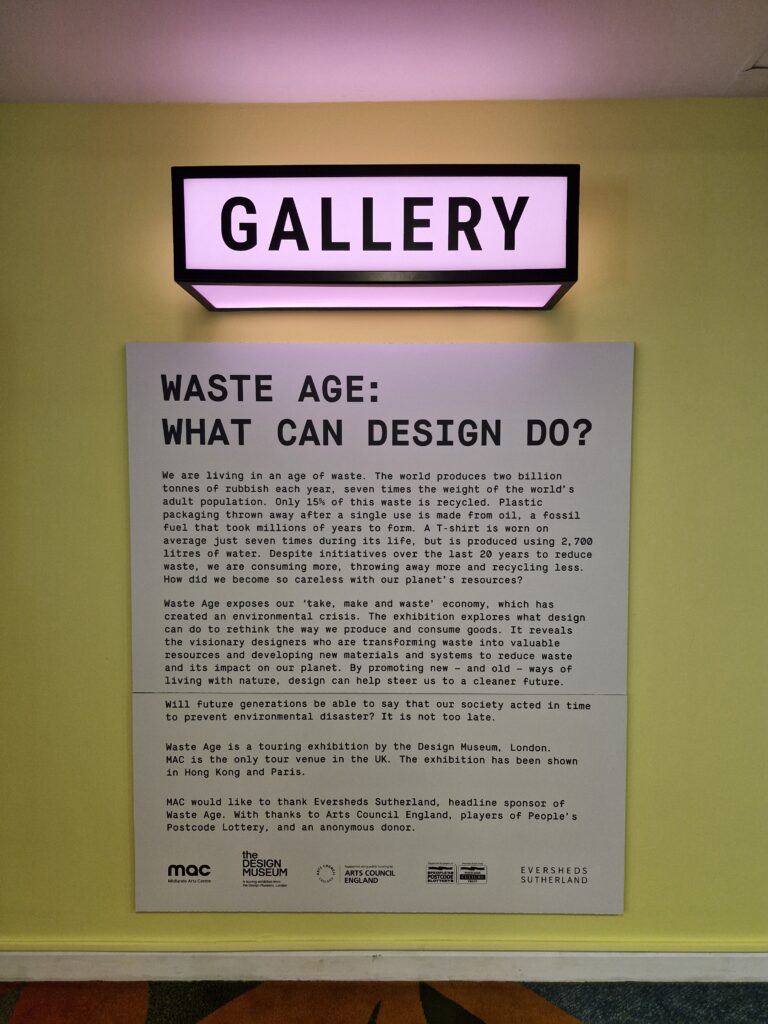
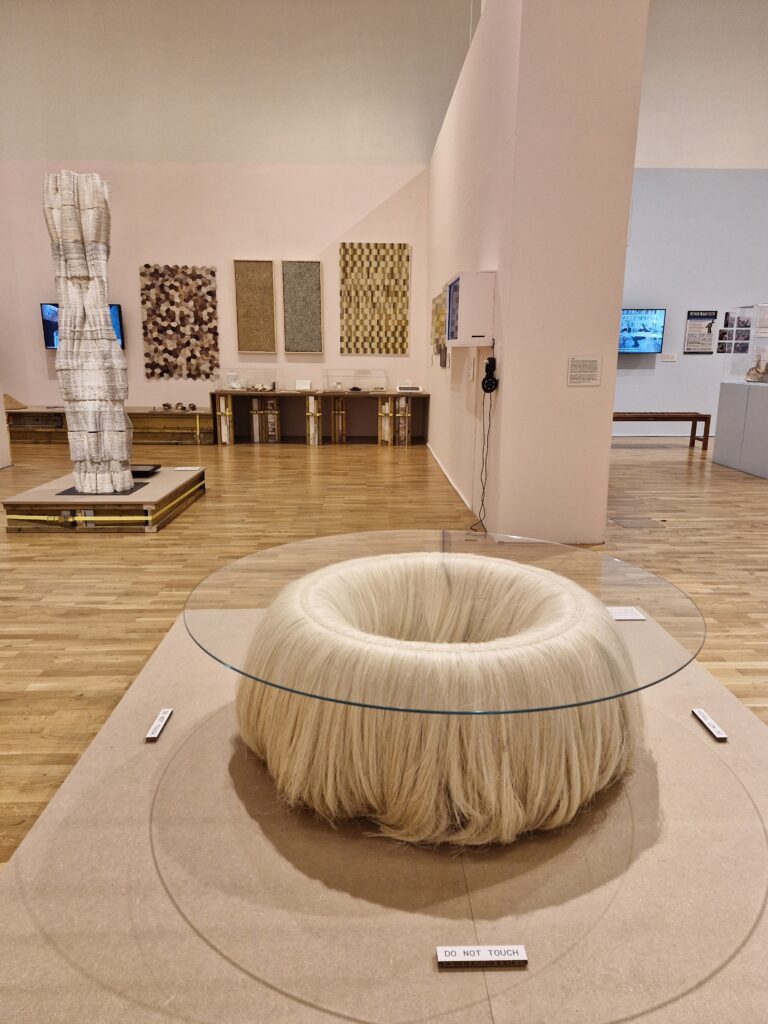
Practising what it preaches, MAC is embedding sustainability across its programme. As Deborah Kermode, CEO and Artistic Director at MAC, has said:
“The issue of sustainability is high on everyone’s agenda and MAC continues to actively explore new ways of working and living. As an arts charity rooted in our local economy and communities, we are passionate about the importance of the arts in helping to communicate, motivate, and engage on issues concerning our planet.”
Art is often the best way to illustrate a problem and this exhibition does just that. While panels of data and statistics highlight the scale and timeline of the issue, it is Edward Burtynsky’s photographs which best capture the impact of waste, which is infecting our planet. His birds-eye views of landfill sites or oil pooling into the sea are images of sublime beauty – impossible to ignore, they engage viewers in the environmental debate.
But this brilliant, optimistic exhibition is focused, primarily, on providing solutions to one of the most urgent problems of our time: waste. The innovative designs seen throughout the exhibition are not only clever but visually appealing, proving that there are almost endless possibilities for designers to transform trash into precious ideas, products – and hope.
Waste Age: What can design do? (booking essential) will run until 23 February 2025 and is part of MAC’s Sustainability season, which includes screenings, performances, creative courses and family events. To find out more, please visit MAC’s Sustainability season | Midlands Arts Centre.
